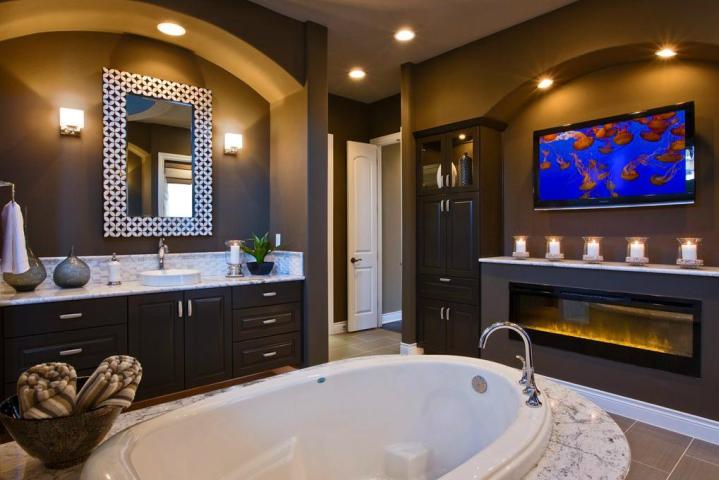
The online resource for everything architectural and interior design recently polled almost 3,200 of its community members who were knee-deep in the middle of a bathroom renovation, as well as those who had just finished one or were planning on tackling the job soon.
One of the things we found interesting was the tech homeowners are incorporating into their bathrooms. It’s not happening in huge numbers, but some people want their lavatories as tricked out as the rest of the house. Five percent of those surveyed have master baths with a TV or bidet. More people want to keep things toasty in the toilette. You’ll find radiant heat flooring in 26 percent of recently redone master baths and towel warmers in 11 percent. “People are putting in LED shower heads,” Nino Sitchinava, principal economist at Houzz, tells Digital Trends. “Five percent are putting that in their masters and also that one percent is putting touch-operated showers in general in their master bathrooms.”
Related: Want to steam things up? Check out these amazing showers
If you think the idea of an LED shower head cool, it might be because of your age. “There’s some of indication that Millennials may be at the edge of this integration of the high-tech,” says Sitchinava. “For example, we’re finding that there’s a difference between some features that the millennials are putting in. Eleven percent of millennials are putting in romantic lighting. So it tends to be dimmer operated lights, as opposed to five percent of Boomers and Gen-Xers.”
What the survey also found is that all renovations are not created equally. The money and outside help enlisted for those infrequent master bath overhauls is very different from the cost and effort put into giving a powder room a facelift. While 50 percent of those surveyed budgeted $10,000 or more for master bath renovations (including 14 percent who planned to spend between $25,000 and $50,000), only eight percent planned to spend that much for a powder room. On the more thrifty end of the scale, 11 percent expected the master bath job to cost less than $2,500; 65 percent said the same for a powder room. While 69 percent of those updating the master bath said they would hire a construction professional, that’s not the case with powder rooms. “They tend to be more DIY, more cosmetic upgrades, with lots of different eclectic features such as wallpaper [and] hardwood flooring,” says Sitchinava.
In any case, however, homeowners are making the investment not to someday get a return on it but make their mark on the place. “The worry about resale value is not at the top of the motivation for upgrades,” says Sitchinava. “What we’re seeing year after year, and what the homeowners are reporting for motivation to be, typically the number one motivation is to improve the look and feel of the place. So the motivation is very personal to the homeowner.”
If you are looking at it purely in terms of economics, some other trends you might want to consider are a bigger shower (67 percent), two sinks (65 percent), and wall sconces (60 percent). But for the most bang for your buck, look at your wall finish or flooring, says Sitchinava. “Those are taken up by more than 80 percent of the homeowners,” she says. “I think that’s the best signal of what’s important.”



